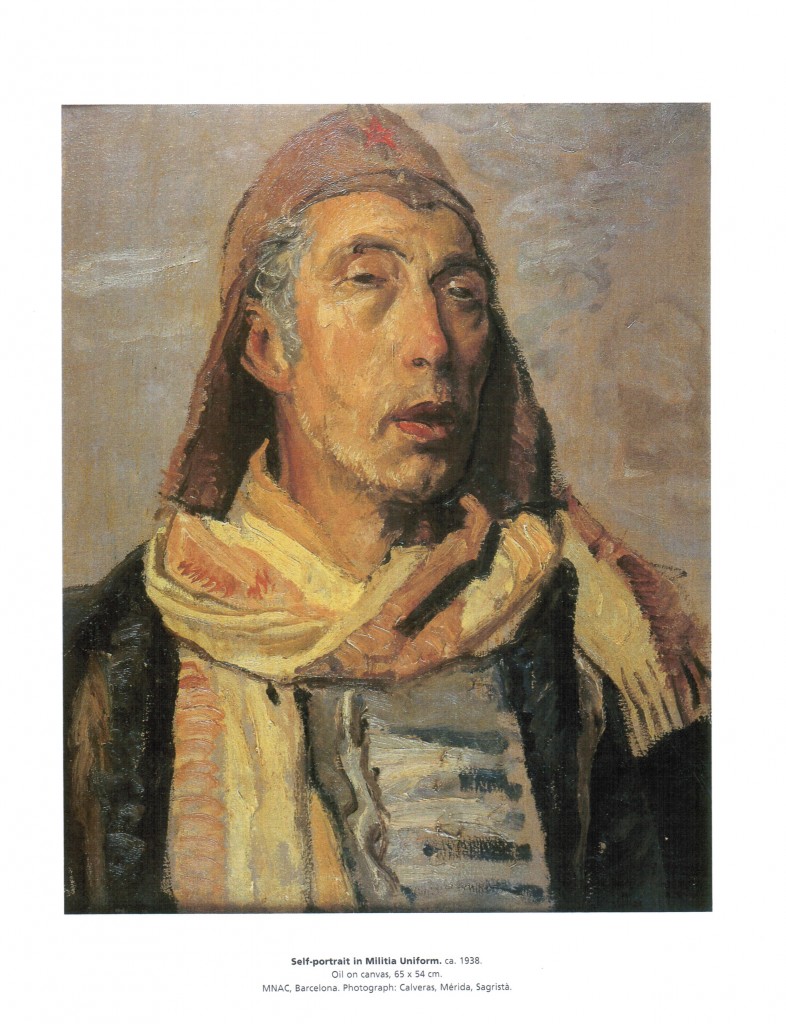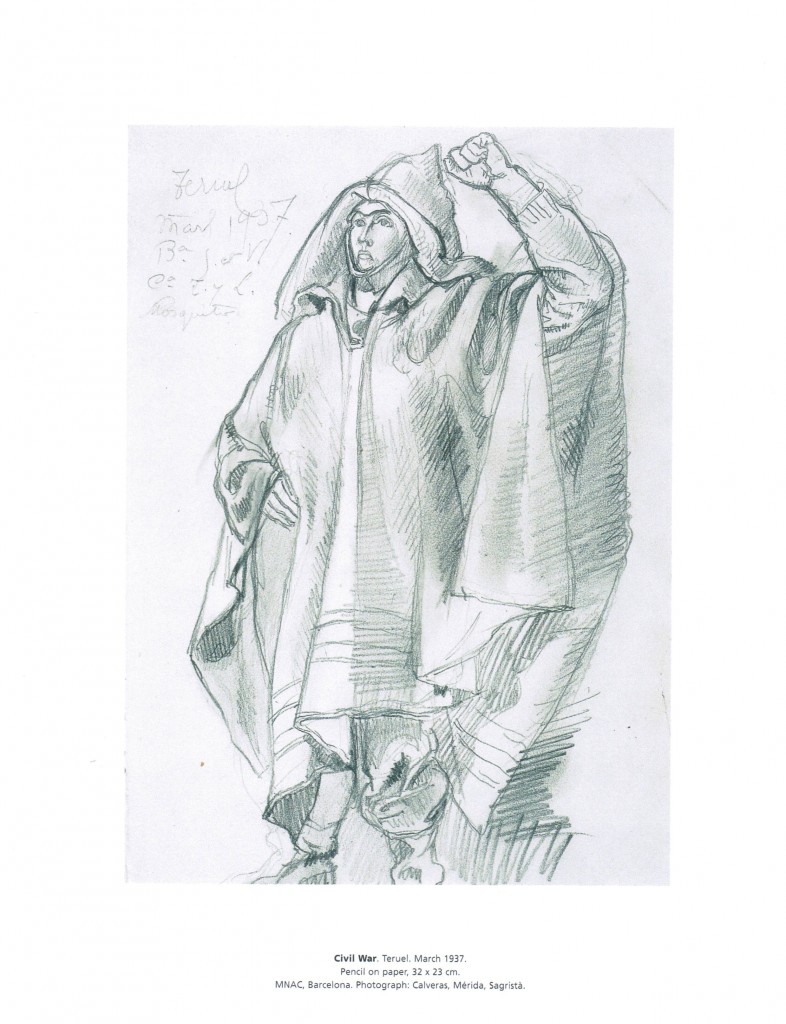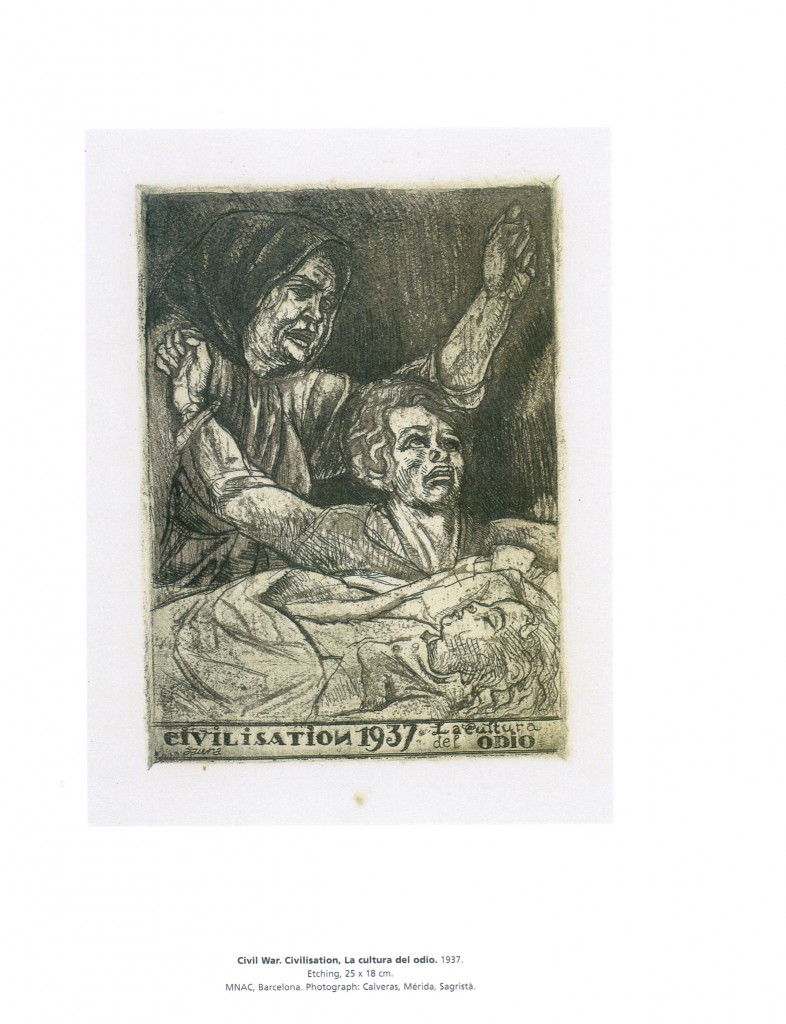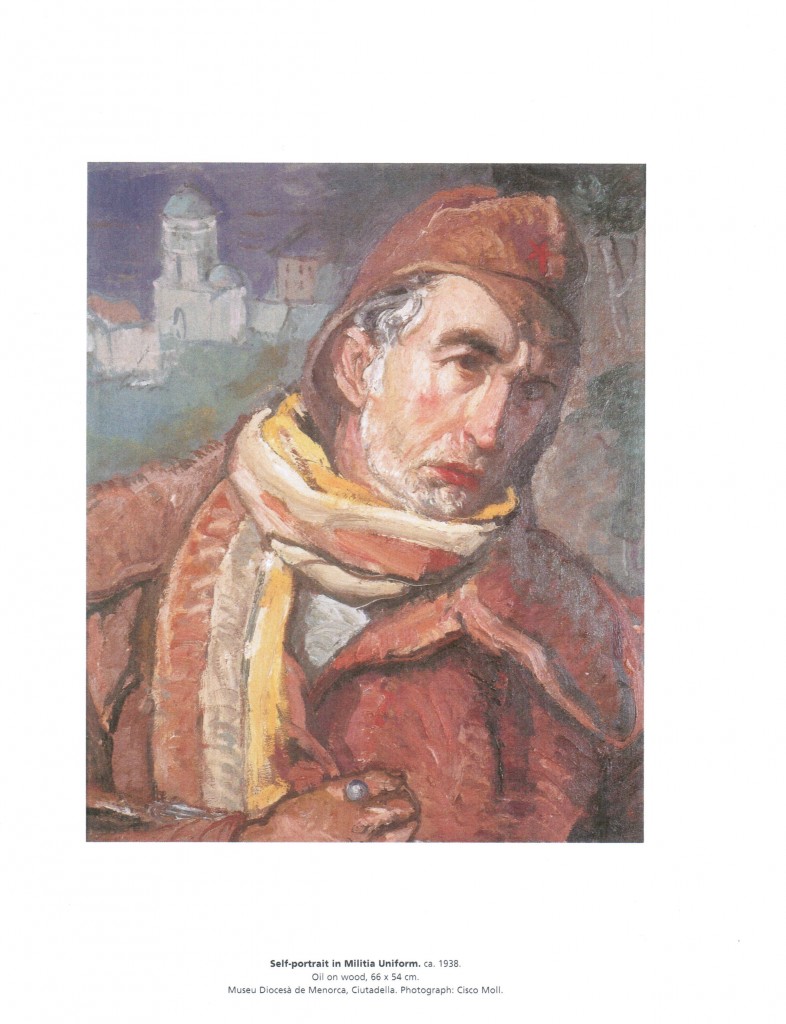Pierre Daura’s Spanish Civil War
Dear Editors,
What a surprise, a few minutes ago, to open the June issue of The Volunteer and to see on page 14 the article about my father, Pierre Daura, with reproductions of two of his paintings. I would like to mention that my father, being a Catalan from Barcelona, was not a member of the International Brigade but of the 59 Brigada Mixta, who served at the Teruel front from February to September 1937, when he was badly wounded and was sent back to St. Cirq-Lapopie, the French village where we had been living since 1930, to recuperate. In the Daura Archive at the Georgia Museum of Art, Athens, Georgia, there is an envelope, containing bone fragments, with my father’s notation “bone fragments I removed from my arm during the retreat.” On his return to France he did several self-portraits, one of which (at the Georgia Museum of Art) shows him in a cap with the letters S-V (for the Sacco-Vanzetti Brigade). He also did a series of engravings about the war which Rockwell Kent was going to sell in the U.S. for the benefit of the cause, but by the time he finished them, the war was essentially over. They are now in museums in Barcelona and the U.S. After his return to France, my father spent as much time as possible helping Spanish refugees, especially to get them out of the French concentration camps such as Argelès. We came to the U.S. in July 1939. Father and I were on a Nansen passport since Father’s Spanish citizenship (and mine, as a minor) had been revoked. We became U.S. citizens in 1943.
Sincerely,
Martha R. Daura




















Martha,
So glad to see more of your father’s works in The Volunteer! Again, let me state what a pleasure it was to speak with you a few years back – I hope you see my love of your father’s work has not waned, and I hope you found the shorter version of a larger interpretation I am developing related to Pax Pacific satisfactory – especially as your suggestion that the mourner may be your father has led me down an interesting interpretive path!
I do want to clarify, though, that the article that was published apparently was edited – and the result ended up suggesting that your father served in the International Brigade. I want to share with you the original introduction that was modified through, apparently, editorial decisions. Here is the first paragraph as I had submitted it in the original shortened version of this essay:
“In 1937-1938 three men’s lives intersected in war-torn Spain. The Spanish Civil War pitted not only Spaniard against Spaniard as the Franco led fascists clashed with Republican Loyalists throughout the country, but it also witnessed the introduction of a host of foreign troops and volunteers coming to the aid of both sides. Within this context a Spaniard, an American, and a German took up arms and fought against Franco and his allies. These men, Pierre Daura, John Rossen, and Herman Bottcher, shared a strong hatred for tyranny. Their hatred toward fascism placed all of them in danger as they came to the aid of the Republican forces.”
I had not mentioned the International Brigade in relation to the three men that are the focus of the essay. Only Bottcher and Rossen served in the Abraham Lincoln Brigade. And, as you indicate, your father served in a Spanish unit.
I am so sorry that the first paragraph ended up suggesting that all three served in the International Brigade – and I am sure the editorial decision was to try to bring the painting into the first paragraph, which I had not done, and to clean up, in all likelihood, some of my more confusing sentence structures.
Thank you for helping to clarify this – and for sharing more of your father’s works! He was truly a talented – and fascinating – artist, and his works have brought me much joy through viewing them and researching them.
Sincerely,
B. Scott Crawford